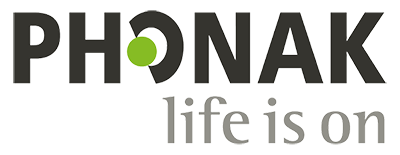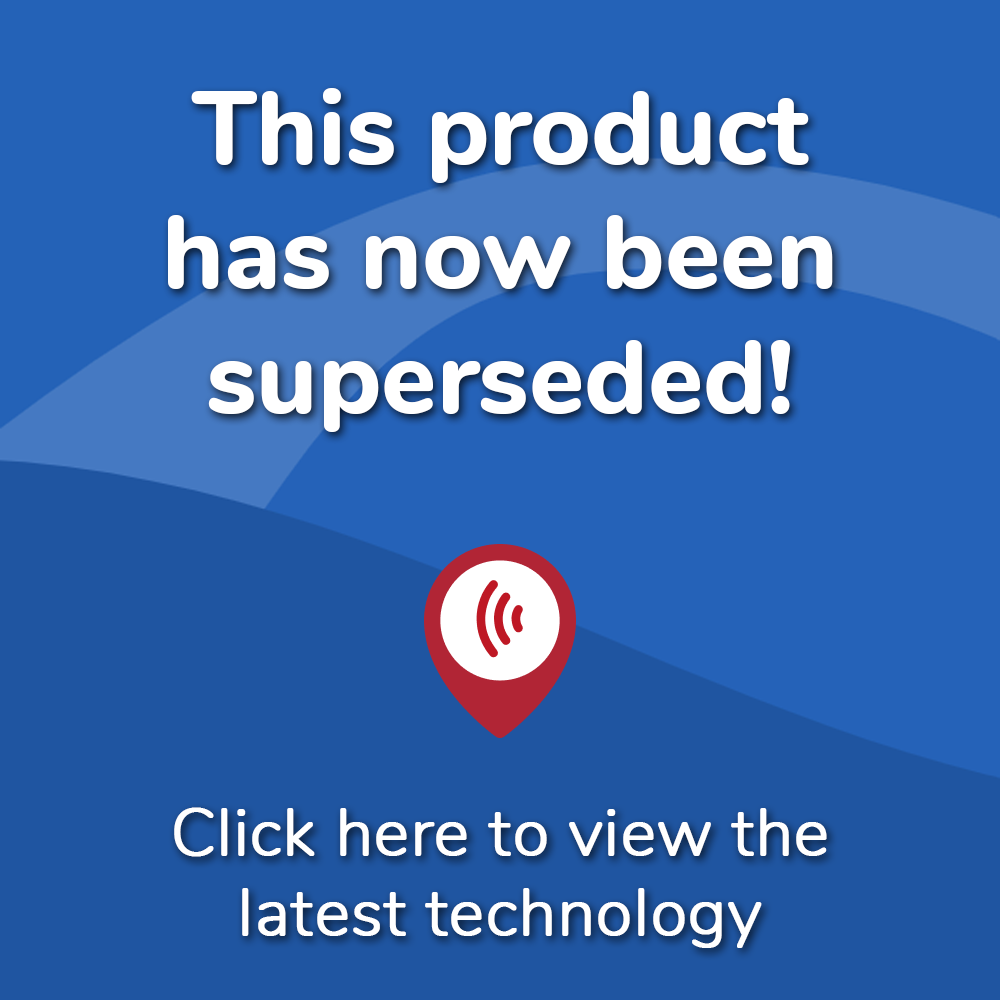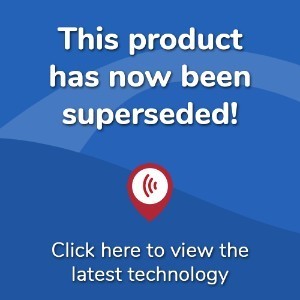WARNING DISCONTINUED Newer Phonak Models Available

What's included in our hearing aid prices?
Details & Features
Update: Want better technology? Visit our Phonak product page, for more recent models.
In 2013 Phonak launched the Naida Q50 which is their third (standard) level of power hearing aid technology. These hearing aids feature the new Quest (‘Q’) chip technology which gives a good range of features and faster sound processing, even better sound quality along with the extra power your hearing loss needs. The Q50 has replaced the previous Naida S3.
These power hearing aids are available in a choice of 3 styles.
The Q-RIC is the Receiver In Canal option in the power range and has a sleek, attractive design with a choice of many different colours. This hearing aid can be connected to Phonak’s range of wireless accessories and also offers Telecoil and FM options. This hearing aid is also designed to be water resistant.
The Q-SP is a BTE (Behind The Ear) power hearing aid that also offers an attractive slim tube option. This hearing aid comes with the same wide choice of subtle or bold colours and is also water resistant. It also incorporates the Telecoil and FM and is fully wireless compatible.
The Q-UP is a slightly larger model but also offers the most power. It is still available with the same choice of colours, is water resistant and also has a longer battery life. It also features the Telecoil and FM options and has full wireless capability.
The Naida Q50 power hearing aids come with Phonak’s new ‘Q’ (Quest) sound processing technology. The new Binaural VoiceStream technology allows your hearing aids to communicate wirelessly with each other and actually share information. There are some new binaural features available that vary depending on the technology level you choose.
The Naida Q50 has 12 sound processing channels to help program your hearing aid for your individual hearing loss and also features NoiseBlock and WhistleBlock which help to eliminate any unwanted noise. This hearing aid also has a feature called SoundRecover, which helps with the more difficult, higher frequency sounds.
Like the other models in this range, the Naida Q50 is compatible with Phonak’s range of wireless accessories. Using the Compilot accessory which sits around your neck you can connect to the TV Link, which will stream the sound from your TV straight to your hearing aids. By attaching the Remote Mic accessory to another person’s clothes, you can enjoy a normal conversation even in a more demanding listening environment as this device will send their voice directly into the hearing aids.
The Verdict
The Phonak Naida Q50 is the third (standard) level of technology in this new range of power hearing instruments. They are suitable for people who require more power when it comes to their hearing loss. It is available in 3 different styles and has a choice of either traditional or bold colours to suit your individuality. The Naida Q50 has replaced the previous Naida S3. The Q50 is a fully wireless hearing aid and is designed to be water resistant and offers a Telecoil feature.
If you are interested in Phonak’s new Quest chip technology but feel you may not require the extra power model there is also a BTE (Behind The Ear) model known as Bolero Q50, an ITE (In The Ear) range known as Virto Q50 and an RIC (Receiver In Canal) range known as Audeo Q50. If you are on a budget there is the Phonak Naida Q30 and models that are more advanced that the Q50 is the Phonak Naida Q70 and the Phonak Naida Q90.
To take a look at more products in the Phonak Naida Q Hearing Aids range and what is available view here.
Paul Harrison is an audiology expert at Hearing Aid UK, with over 20 years of audiology experience and a member of the British Society of Hearing Aid Audiologists Council (BSHAA) between 2015 - 2020.
Looking for a Newer Widex Hearing Aid Model?
Latest Ranges AvailableOur specialist service includes:
Do not spend hundreds of pounds without getting a second opinion from us.
Please call us on 0800 567 7621
 Not only are the prices great, but the service is fantastic! Many thanks to your team.
Not only are the prices great, but the service is fantastic! Many thanks to your team.What's included in our hearing aid prices?
If you are looking at this page then it is likely that an audiologist has suggested that you purchase this particular hearing aid, so is this the best model for you?
In general, any audiologist will always recommend to you the model that best suits your needs. Here is a useful checklist to make sure that is the case.
- Audiologist level of knowledge: The audiologist you have seen will hopefully have a wide knowledge of all available hearing aids, however, some will only be familiar with a small number of brands and therefore may not really be in a position to know which model is the best for you. It is OK to challenge their recommendation and ask them to justify why this particular brand is the one for you.
- Do research: Read about the hearing aid that was recommended. Does it seem like it will suit your lifestyle? Does it have more or fewer features than you need?
- Be aware of sales targets: Many high street retailers have specific tie-ins to a particular manufacturer/brand. The hearing aid they have suggested may still be the correct one for you, but do your research so that you know why they might have recommended it.
If in doubt, feel free to give us a call. That's what we're here for. In the meantime, read all about our review of the best hearing aids for 2025 here
If you have significant hearing loss in both ears, you should be wearing two hearing aids. Here are the audiological reasons why:
Localisation: The brain decodes information from both ears and compares and contrasts them. By analysing the minuscule time delays as well as the difference in the loudness of each sound reaching the ears, the person is able to accurately locate a sound source. Simply put, if you have better hearing on one side than the other, you can't accurately tell what direction sounds are coming from.
Less amplification is required: A phenomenon known as “binaural summation” means that the hearing aids can be set at a lower and more natural volume setting than if you wore only one hearing aid.
Head shadow effect: High frequencies, the part of your hearing that gives clarity and meaning to speech sounds, cannot bend around your head. Only low frequencies can. Therefore if someone is talking on your unaided side you are likely to hear that they are speaking, but be unable to tell what they have said.
Noise reduction: The brain has its own built-in noise reduction which is only really effective when it is receiving information from both ears. If only one ear is aided, even with the best hearing aid in the world, it will be difficult for you to hear in background noise as your brain is trying to retain all of the sounds (including background noise) rather than filtering it out.
Sound quality: We are designed to hear in stereo. Only hearing from one side sounds a lot less natural to us.
Fancy some further reading on this topic? You can read about why two hearing aids are better than one in our article, hearing aids for both ears, here
For most people, the main benefit of a rechargeable hearing aid is simple convenience. We are used to plugging in our phones and other devices overnight for them to charge up. Here are some other pros and cons:
For anybody with poor dexterity or issues with their fingers, having a rechargeable aid makes a huge difference as normal hearing aid batteries are quite small and some people find them fiddly to change.
One downside is that if you forget to charge your hearing aid, then it is a problem that can't be instantly fixed. For most a 30-minute charge will get you at least two or three hours of hearing, but if you are the type of person who is likely to forget to plug them in regularly then you're probably better off with standard batteries.
Rechargeable aids are also a little bit bigger and are only available in Behind the Ear models.
Finally, just like with a mobile phone, the amount of charge you get on day one is not going to be the same as you get a few years down the line. Be sure to ask what the policy is with the manufacturer warranty when it comes to replacing the battery.
Looking for more information on rechargeable hearing aids? Read our dedicated page on the topic here
For most people, the answer is yes. But it's never that simple.
The majority of hearing problems affect the high frequencies a lot more than the low ones. Therefore open fitting hearing aids sound a lot more natural and ones that block your ears up can make your own voice sound like you are talking with your head in a bucket. Therefore in-ear aids tend to be less natural.
However the true answer is we can't tell until we have had a look in your ears to assess the size of your ear canal, and until we have tested your hearing to see which frequencies are being affected.
People with wider ear canals tend to have more flexibility, also there are open fitting modular CIC hearing aids now that do not block your ears.
There is also the age old rule to consider, that a hearing aid will not help you if it's sat in the drawer gathering dust. If the only hearing aid you would be happy wearing is one that people can't see, then that's what you should get.
Most people can adapt to any type of hearing aid, as long as they know what to expect. Have an honest conversation with your audiologist as to what your needs are.
Generally speaking, six or more. Unless it's none at all.
The number of channels a hearing aid has is often a simplistic way an audiologist will use to explain why one hearing aid is better than another, but channels are complex and it is really not that straightforward. Here are some reasons why:
Hearing aids amplify sounds of different frequencies by different amounts. Most people have lost more high frequencies than low and therefore need more amplification in the high frequencies. The range of sounds you hear are split into frequency bands or channels and the hearing aids are set to provide the right amount of hearing at each frequency level.
Less than six channels and this cannot be done with much accuracy, so six is the magic number. However, a six channel aid is typically very basic with few other features and is suitable only for hearing a single speaker in a quiet room. The number of channels is not what you should be looking at, it's more the rest of the technology that comes with them.
As a final note, different manufacturers have different approaches. One method is not necessarily better than any other. For example, some manufacturers have as many as 64 channels in their top aids. Most tend to have between 17 and 20. One manufacturer has no channels at all.
Hearing aids are easily lost, misplaced or damaged and typically are one of the most expensive personal possessions an individual can own. We offer hearing aid warranty coverage for £80 per year per aid. Find out more about this service we provide here
All our audiologists use the very latest technology and provide the full range of tests to accurately measure your hearing for free. Find out about what hearing healthcare services we offer all our customers here
Hearing Aid UK offers all their customers free home visiting services, even in a care home environment, for no extra cost. Including hearing tests, fittings, maintenance, check-ups and much more in the comfort of your own home and at your convenience. Find out more information about our home visits here
Here, at Hearing Aid UK, we are dedicated to offering low hearing aid prices. We achieve this by having no head office and low marketing costs. Our hearing aid prices are amongst the lowest you will find anywhere in the world. Explore our prices, brands, and models here
Ask the Experts
6 Morton Lane
Walkwood
Redditch
Worcestershire
B97 5QA
Latest Launch
When we refer to a product as 'Latest Launch', we mean it is the latest to be released on the market.
New
When we refer to a product as 'New', we mean that the product is the newest hearing aid model on the market.
When we refer to a product as 'Superseded', we mean that there is a newer range available which replaces and improves on this product.
Older Model
When we refer to a product as an 'Older Model', we mean that it is has been superseded by at least two more recent hearing aid ranges.



